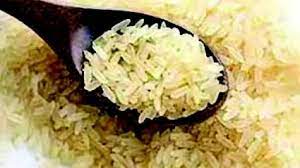20% Export Duty On Parboiled Rice:

The Central Government recently imposed a 20% export duty on parboiled rice.
- Parboiled Rice also called converted rice, is partially precooked in its inedible husk before being processed for eating.
- It happens before rice is milled, that is, before the inedible outer husk is removed to yield brown rice but before brown rice is refined to make white rice.
- In some Asian and African countries, people have been parboiling rice since ancient times as it makes the husks easier to remove by hand.
- The main steps of parboiling are
- Soaking: Raw, unhusked rice, also called paddy rice, is soaked in warm water to increase the moisture content.
- Steaming: The rice is steamed until the starch converts into a gel. The heat of this process also helps kill bacteria and other microbes.
- Drying: The rice is slowly dried to reduce the moisture content so that it can be milled.
- Husking: The dried, partially cooked rice is then milled to remove the outer husk. The result is parboiled rice.
- Parboiling rice improves its texture, increases its shelf life, and provides health benefits.
- Parboiled rice is higher in fibre and protein than white rice.
- Parboiling reduces the stickiness of rice, so it yields fluffy and separate kernels once cooked.
- Additionally, parboiling inactivates the enzymes that break down the fat in rice. This helps prevent rancidity and off-flavors, increasing shelf-life




